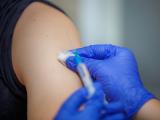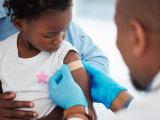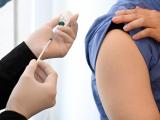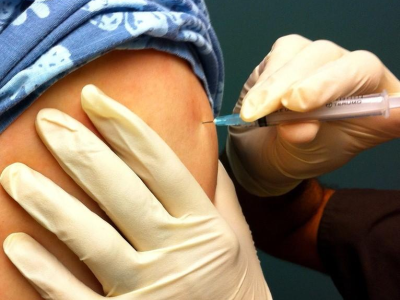Dec 10, 2008 (CIDRAP News) – The Rand Corp. today released its first-ever midseason survey on the uptake of the current influenza vaccine, which found that public officials still have a tall task in front of them to administer this year's record vaccine supply.
The survey indicated that about 30% of US adults had received a flu shot by mid November, but more than half of those surveyed said they didn't plan to get the immunization.
In a teleconference with journalists today, representatives from public health groups including the National Vaccine Summit were on hand to comment on the report's findings. William Schaffner, MD, president-elect of the National Foundation for Infectious Diseases, said, "This is a first-time opportunity to give ourselves a report card in the middle of the season, and we'll do what we have to do to improve uptake." He also chairs the Department of Preventive Medicine at the Vanderbilt University School of Medicine.
The release of the study is among several nationwide initiatives this week to support National Influenza Vaccination Week, designated by the Centers for Disease Control and Prevention (CDC) to raise public awareness of the importance of flu vaccination and to urge providers to extend their vaccination efforts into December and through the rest of the flu season.
A timely status report
Katherine Harris, a Rand economist and coauthor of the survey report, said the goal of the report wasn't just to gauge uptake; investigators also wanted to know if people were intending to get the flu shot this season, and if not, why not. A link to the 6-page report, along with supporting documents on the survey and its methodology, is available on Rand's Web site.
"This report provides the public health community with a midseason snapshot while there's still time to act," she said. The survey was conducted with funding from GlaxoSmithKline, maker of Fluarix and FluLaval influenza vaccines.
The nationally representative survey included 3,969 adults (age 18 and older). Rand worked with Knowledge Networks, Inc., which conducts online studies with subjects recruited using random-digit dialing. Harris said the survey was administered to 6,056 online panelists between Nov 7 and Nov 19. Sixty-six percent of the group completed the survey.
She said the Rand investigators pushed the limits of timely data gathering and were able to wrap up the details, including internal peer review, only 2 weeks after the survey's Nov 19 conclusion date.
Vaccination season takes shape
The survey showed that 30% of the respondents had already been vaccinated, 17% said they planned to receive a flu shot, and 53% said they had no intention of doing so.
Among respondents in groups recommended for vaccination, such as people older than 50 or with a high-risk condition, 37% said they had been vaccinated. But the percentage of those respondents who said they planned to be vaccinated was the same as in the overall group at 17%.
"What we're seeing here are huge opportunities for improvement," Harris said. Schaffner added that he found the findings "sobering," but he said a silver lining was the higher uptake among the higher-risk groups.
About 30% of healthcare workers and caregivers reported receiving their flu vaccine, but 57% said they didn't intend to get one. Schaffner said he hoped that low uptake and intent numbers in this group reflect the possibility that some healthcare institutions were still conducting their vaccination programs when the survey was taken.
L.J. Tan, PhD, director of infectious diseases for the American Medical Association (AMA), said only 13% of the healthcare and caretaker group intended to be vaccinated. "We've got a lot of work to do here," he said.
Investigators explored vaccine uptake patterns so far among different chronic-disease groups. Those reporting receiving their vaccines ranged from 33% among asthma patients to 63% of respondents with chronic lung disease. Tan said that even those numbers show the need for more outreach to those with high-risk medical conditions.
Vaccine uptake did not vary much across the country, according to the report. Schaffner called the numbers "wimpy across the board. We can't celebrate or ding any part of the country."
Reasons for forgoing flu shots
The research group also explored the reasons people haven't yet gotten their flu shots. Forty-one percent said they didn't have time, and 35% gave other reasons. Tan said he was concerned about the lack-of-time rationale. "It's a cultural perception that this isn't high on people's priority list. If it was, they would find the time," he said.
Reasons for deciding not to get a flu shot included a perceived lack of need (25%), beliefs against flu shots (20%), fear of sickness or side effects (19%), and the belief that others need it more (8%). About 28% gave various other reasons, some of which included lack of physician recommendation and cost. Schaffner said the findings reveal that public health officials still have a lot of work to do to debunk popular myths about influenza vaccination.
Claire Hannan, executive director of the Association of Immunization Managers, said the survey findings serve as a wake-up call and validate what public health officials are seeing in the field. She urged healthcare providers and the public health community to remind the public that plenty of vaccine is available, and to use the holiday season to persuade patients to give their families and loved ones the gift of prevention by getting vaccinated.
MedImmune donates 1 million FluMist doses
In other developments, the National Association of County and City Health Officials (NACCHO) today announced that MedImmune, maker of the FluMist influenza vaccine, is donating up to 1 million doses of the inhaled vaccine in an effort to boost awareness about influenza and vaccination rates in underserved communities.
NACCHO said it would funnel the donated vaccine to selected state and local health departments starting this month.
Gary Cox, JD, president of NACCHO, said in a press release today, "These doses of vaccine will go a long way to support a national objective of immunizing all persons who should receive flu vaccine, especially those who are least able to afford it."
See also:
Rand midseason influenza vaccination survey and supporting documents
Dec 10 NACCHO press release















